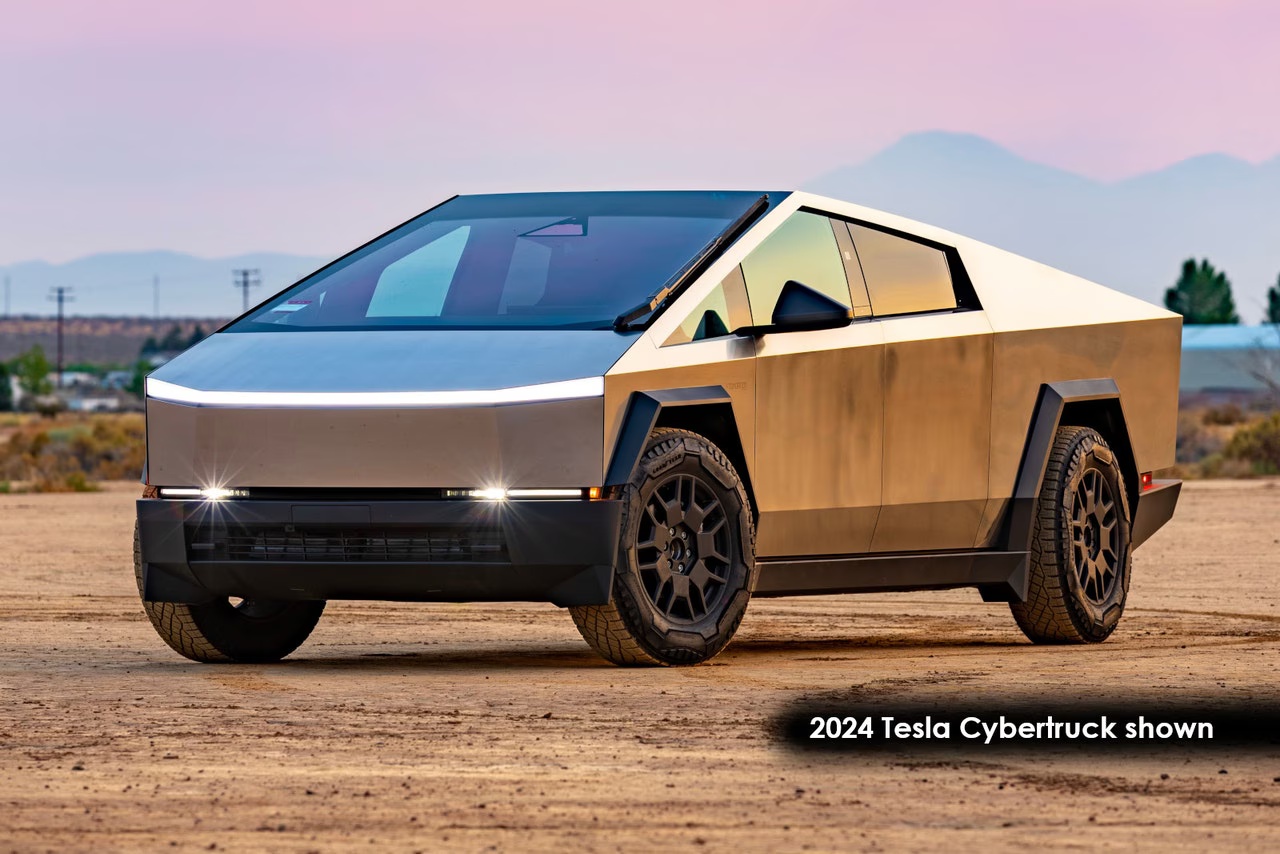Introduction
Tesla's futuristic Cybertruck has gained significant attention for its unique design, featuring sharp angles and an unconventional exoskeleton. One of the standout decisions in the Cybertruck’s development was Tesla's choice to use stainless steel for the exterior. This decision was driven by several factors, including durability, aesthetic appeal, and resistance to corrosion. But what type of stainless steel did Tesla select, and why? In this article, we’ll explore the details behind Tesla's material choice, its benefits, and potential challenges.

What Stainless Steel is Used in Cybertruck?
The Cybertruck’s exoskeleton is crafted from 300-series stainless steel, specifically a variant of 30X cold-rolled stainless steel, which is similar to 304-grade but modified for added strength. This specific material is commonly used in industries requiring extreme durability, such as aerospace and architecture. Tesla’s version of 30X stainless steel is unique in several ways:
1.Cold-Rolled Process:
Cold-rolling the steel increases its strength and enhances its smooth finish, giving the Cybertruck its distinct, sleek appearance. Cold-rolled stainless steel also has a higher resistance to deformation, making it suitable for a vehicle that promises to endure rugged conditions.
2.Corrosion Resistance:
30X stainless steel offers high corrosion resistance, which is crucial for a vehicle exposed to varying weather conditions and potential corrosive substances, like road salt. This steel helps maintain the truck’s integrity and appearance without requiring extensive maintenance.
3.Unpainted Surface:
The stainless steel used for the Cybertruck is left unpainted, which not only gives it a unique, industrial look but also eliminates the need for additional coatings that could peel or chip over time. This raw finish has become an iconic aspect of the Cybertruck's bold design.
Why Cybertruck Uses Stainless Steel?
Tesla’s decision to use stainless steel for the Cybertruck goes beyond aesthetics. Here are a few reasons why this material was chosen:
1.Durability and Strength:
Stainless steel is incredibly tough and impact-resistant. For a vehicle marketed as an off-road powerhouse, the ability to withstand dings, scratches, and impact is essential. Tesla CEO Elon Musk even demonstrated the Cybertruck’s durability by striking it with a sledgehammer during its reveal.
2.Cost-Effective Manufacturing:
By choosing stainless steel, Tesla has created a unique, production-efficient exoskeleton that reduces the need for traditional paint and finishing processes. This approach not only saves costs but also speeds up the production line, allowing for faster manufacturing.
3.Longevity:
Tesla’s mission includes promoting sustainable and long-lasting vehicles. Stainless steel’s resistance to corrosion and wear aligns with this mission, ensuring that the Cybertruck remains functional and visually appealing for years with minimal maintenance.
Case Study: The DeLorean Connection
The use of stainless steel in automotive design is not entirely new. In the 1980s, the DeLorean DMC-12 famously used unpainted stainless steel panels. Although it faced challenges due to other mechanical issues, the DeLorean’s stainless steel body demonstrated durability and resilience to rust, an inspiration for Tesla’s bold design choice.
Does Cybertruck Have a Rust Problem?
With any unpainted stainless steel vehicle, concerns about rust and corrosion naturally arise. Fortunately, the Cybertruck’s stainless steel composition is highly resistant to rust due to its chromium content, which helps prevent oxidation. Here’s how Tesla addresses rust prevention:
1.Material Composition:
The 30X stainless steel alloy is engineered with chromium and nickel, which create a protective layer that minimizes rust formation. Unlike traditional carbon steel, stainless steel does not rust easily, making it an ideal choice for vehicles exposed to the elements.
2.Maintenance Requirements:
Unlike painted vehicles that require regular touch-ups to prevent rust from chips or scratches, the Cybertruck’s stainless steel surface is naturally resistant to damage. However, like any stainless steel surface, it may still show some wear over time, particularly if exposed to extreme salt or chemicals.
3.Environmental Impact:
Stainless steel is also an environmentally friendly choice since it is recyclable and reduces the need for toxic paints and coatings. This material choice aligns with Tesla’s sustainable goals while providing consumers with a resilient, long-lasting vehicle.
User Insight: Potential for Wear and Tear
While stainless steel is rust-resistant, it’s not entirely immune to wear over time. Owners in regions with high salt use on roads may still need to wash their Cybertrucks regularly to prevent salt buildup, just like with other stainless steel vehicles.
Conclusion
Tesla’s choice to use stainless steel for the Cybertruck’s exoskeleton is a groundbreaking decision in automotive manufacturing. Not only does it lend durability and aesthetic appeal, but it also supports Tesla’s mission of creating sustainable, long-lasting vehicles. The 30X cold-rolled stainless steel used provides excellent resistance to rust and corrosion, while the raw, unpainted look is both eye-catching and practical.
For stainless steel purchasers, Tesla’s Cybertruck showcases the versatility of stainless steel in challenging applications, proving its value in environments where strength, corrosion resistance, and cost-effectiveness are paramount.